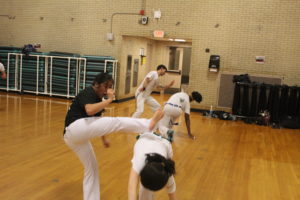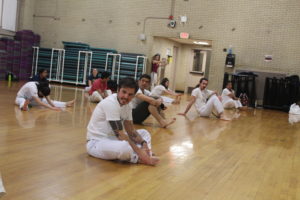Some of my favorites moments I’ve had in capoeira has been playing a friend.
Sometimes competition is intimidating they know all of your moves, you know all of theirs. There’s not a shyness about what they can handle or how rough you can be. All of that is in the mind bank, and it expected that it is used. Most of the time, it means that those types of games are going to be intense. Even if you want to opt out, it’s expected for you to play those games. Mestre might even force you to play those games.
Those are games are the ones that people need to find comfort in.
Intense games with strangers, no matter how friendly, are dangerous. It’s instructed to be an aware and mindful as you can when you play new people. It’s a matter of safety, especially with the history the art has had, not to mention how people are in general. It’s best to start off guarded, anticipating the worse. After that happens a few times, you still have to keep the guard up. Capoeira is tricky. The kick comes when you at least expect.
That’s why capoeiristas reflexes are so good.
Plus, getting kicked by your friends make for interesting stories.


